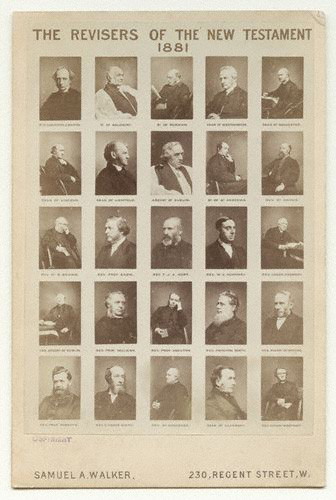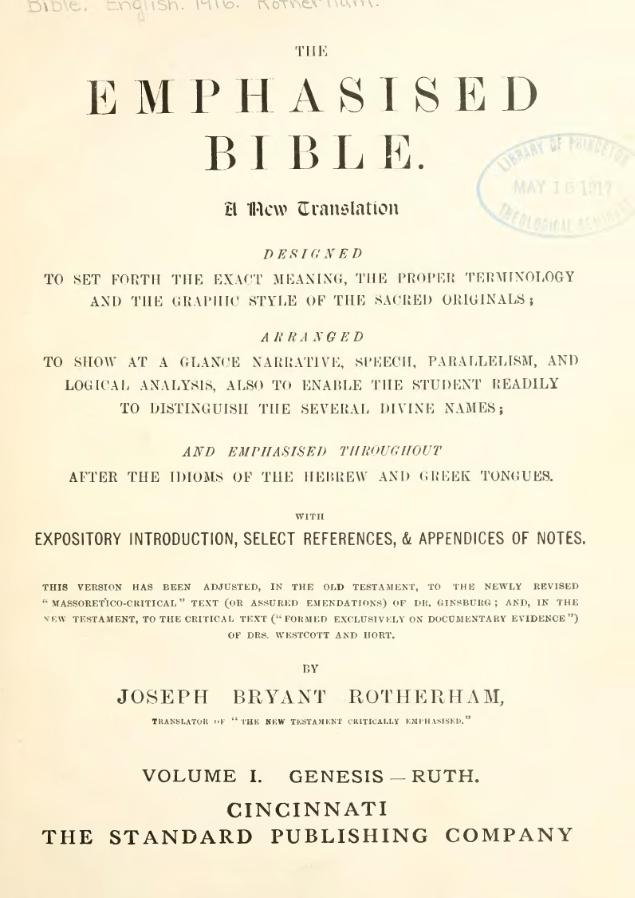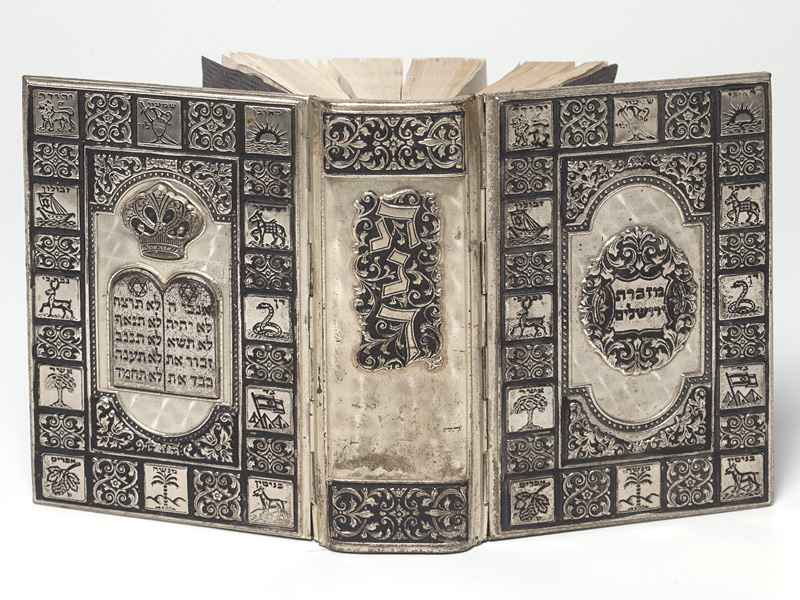|
Sacred Scriptures Bethel Edition
The Sacred Scriptures Bethel Edition (SSBE) is a Sacred Name Bible which uses the names Yahweh and Yahshua in both the Old and New Testaments (''Chamberlin'' p. 51-3). It was produced by Jacob O. Meyer, based on the American Standard Version of 1901 and it contains over 977 pages. The Assemblies of Yahweh printed 5,500 copies of the first edition in 1981. It is also used by some members of the Sacred Name Movement. History Use In the early years of the ministry, Jacob O. Meyer, the Directing Elder of the Assemblies of Yahweh, would preach using a King James Version (KJV) Bible, simply replacing Lord, Jesus and God by Yahweh and Yahshua. The KJV presented a problem in that, as pointed out by Bible scholars, there are numerous errors in the text. During the late 19th century and on to the early 20th century, a number of notable Bible translations came about which were more accurate than their predecessor, the KJV. These include the American Standard Version, the New Inte ... [...More Info...] [...Related Items...] OR: [Wikipedia] [Google] [Baidu] |
Revised Version
The Revised Version (RV) or English Revised Version (ERV) of the Bible is a late 19th-century British revision of the King James Version. It was the first and remains the only officially authorised and recognised revision of the King James Version in Great Britain. The work was entrusted to over 50 scholars from various denominations in Great Britain. American scholars were invited to co-operate, by correspondence.Revised Version - CAMBRIDGE - At the University Press - London: Cambridge University Press, 200 Euston Road, N.W., Synopsis Its New Testament was published in 1881, its Old Testament in 1885, and its Apocrypha in 1894. The best known of the translation committee members were Brooke Foss Westcott and Fenton John Anthony Hort; their fiercest critics of that period were John William Burgon and George Saintsbury. Features The New Testament revision company was commissioned in 1870 by the convocation of Canterbury. Their stated aim was "to adapt King James' version to th ... [...More Info...] [...Related Items...] OR: [Wikipedia] [Google] [Baidu] |
Jerusalem Bible
''The Jerusalem Bible'' (JB or TJB) is an English translation of the Bible published in 1966 by Darton, Longman & Todd. As a Catholic Bible, it includes 73 books: the 39 books shared with the Hebrew Bible, along with the seven deuterocanonical books as the Old Testament, and the 27 books shared by all Christians as the New Testament. It also contains copious footnotes and introductions. For roughly half a century, the Jerusalem Bible has been the basis of the lectionary for Mass used in Catholic worship throughout much of the English-speaking world outside of North America, though in recent years various Bishops' conferences have begun to transition to more modern translations, including the English Standard Version in the United Kingdom and India and the Revised New Jerusalem Bible in Australia, New Zealand, and Ireland. History In 1943 Pope Pius XII issued an encyclical letter, ''Divino afflante Spiritu'', which encouraged Roman Catholics to translate the scriptures ... [...More Info...] [...Related Items...] OR: [Wikipedia] [Google] [Baidu] |
New Testament
The New Testament grc, Ἡ Καινὴ Διαθήκη, transl. ; la, Novum Testamentum. (NT) is the second division of the Christian biblical canon. It discusses the teachings and person of Jesus, as well as events in first-century Christianity. The New Testament's background, the first division of the Christian Bible, is called the Old Testament, which is based primarily upon the Hebrew Bible; together they are regarded as sacred scripture by Christians. The New Testament is a collection of Christian texts originally written in the Koine Greek language, at different times by various authors. While the Old Testament canon varies somewhat between different Christian denominations, the 27-book canon of the New Testament has been almost universally recognized within Christianity since at least Late Antiquity. Thus, in almost all Christian traditions today, the New Testament consists of 27 books: * 4 canonical gospels (Matthew, Mark, Luke, and John) * The Acts of the Apostl ... [...More Info...] [...Related Items...] OR: [Wikipedia] [Google] [Baidu] |
Old Testament
The Old Testament (often abbreviated OT) is the first division of the Christian biblical canon, which is based primarily upon the 24 books of the Hebrew Bible or Tanakh, a collection of ancient religious Hebrew writings by the Israelites. The second division of Christian Bibles is the New Testament, written in the Koine Greek language. The Old Testament consists of many distinct books by various authors produced over a period of centuries. Christians traditionally divide the Old Testament into four sections: the first five books or Pentateuch (corresponds to the Jewish Torah); the history books telling the history of the Israelites, from their conquest of Canaan to their defeat and exile in Babylon; the poetic and " Wisdom books" dealing, in various forms, with questions of good and evil in the world; and the books of the biblical prophets, warning of the consequences of turning away from God. The books that compose the Old Testament canon and their order and names differ b ... [...More Info...] [...Related Items...] OR: [Wikipedia] [Google] [Baidu] |
Emphasized Bible
Joseph Bryant Rotherham's Emphasized Bible (abbreviated EBR to avoid confusion with the Revised English Bible, REB) is a translation of the Bible which uses various methods, such as "emphatic idiom" and special diacritical marks, to bring out nuances of the underlying Greek, Hebrew, and Aramaic texts. Rotherham was a Bible scholar and minister of the Churches of Christ, who described his goal as "placing the reader of the present time in as good a position as that occupied by the reader of the first century for understanding the Apostolic Writings". The ''New Testament Critically Emphasised'' was first published in 1872. However, great changes occurred in textual criticism during the second half of the 19th century, culminating in Westcott and Hort, Brooke Foss Westcott's and Fenton John Anthony Hort's Greek text of the New Testament. This led Rotherham to revise his New Testament twice, in 1878 and 1897, to stay abreast of scholarly developments. The entire Bible with the Old ... [...More Info...] [...Related Items...] OR: [Wikipedia] [Google] [Baidu] |
Encyclopedia Judaica
The ''Encyclopaedia Judaica'' is a 22-volume English-language encyclopedia of the Jewish people, Judaism, and Israel. It covers diverse areas of the Jewish world and civilization, including Jewish history of all eras, culture, holidays, language, scripture, and religious teachings. As of 2010, it had been published in two editions accompanied by a few revisions. The English-language ''Judaica'' was also published on CD-ROM. The CD-ROM version has been enhanced by at least 100,000 hyperlinks and several other features, including videos, slide shows, maps, music and Hebrew pronunciations. While the CD-ROM version is still available, the publisher has discontinued it. The encyclopedia was written by Israeli, American and European professional subject specialists. History Preceding attempts Between 1901 and 1906 ''The Jewish Encyclopedia'' had been published in 12 volumes. It was followed by the ''Jüdisches Lexikon I–II'' (1927–28, in German), ''Encyclopaedia Judaica I–II ... [...More Info...] [...Related Items...] OR: [Wikipedia] [Google] [Baidu] |
Hebrew Scriptures
The Hebrew Bible or Tanakh (;"Tanach" ''''. : ''Tānāḵh''), also known in Hebrew as Miqra (; : ''Mīqrā''), is the canonical collection of script ... [...More Info...] [...Related Items...] OR: [Wikipedia] [Google] [Baidu] |
YHWH
The Tetragrammaton (; ), or Tetragram, is the four-letter Hebrew theonym (transliterated as YHWH), the name of God in the Hebrew Bible. The four letters, written and read from right to left (in Hebrew), are ''yodh'', '' he'', ''waw'', and ''he''. The name may be derived from a verb that means "to be", "to exist", "to cause to become", or "to come to pass".Translation notes for While there is no consensus about the structure and etymology of the name, the form ''Yahweh'' is now accepted almost universally, though the vocalization ''Jehovah'' continues to have wide usage. The books of the Torah and the rest of the Hebrew Bible except Esther, Ecclesiastes, and (with a possible instance of the short form in verse 8:6) the Song of Songs contain this Hebrew name. Observant Jews and those who follow Talmudic Jewish traditions do not pronounce nor do they read aloud proposed transcription forms such as ''Yahweh'' or ''Yehovah''; instead they replace it with a different term, wh ... [...More Info...] [...Related Items...] OR: [Wikipedia] [Google] [Baidu] |
Shakespearean English
Early Modern English or Early New English (sometimes abbreviated EModE, EMnE, or ENE) is the stage of the English language from the beginning of the Tudor period to the English Interregnum and Restoration, or from the transition from Middle English, in the late 15th century, to the transition to Modern English, in the mid-to-late 17th century. Before and after the accession of James I to the English throne in 1603, the emerging English standard began to influence the spoken and written Middle Scots of Scotland. The grammatical and orthographical conventions of literary English in the late 16th century and the 17th century are still very influential on modern Standard English. Most modern readers of English can understand texts written in the late phase of Early Modern English, such as the '' King James Bible'' and the works of William Shakespeare, and they have greatly influenced Modern English. Texts from the earlier phase of Early Modern English, such as the late-15th-ce ... [...More Info...] [...Related Items...] OR: [Wikipedia] [Google] [Baidu] |
El (deity)
(also Il, uga, 𐎛𐎍 ''ʾīlu''; phn, 𐤀𐤋 ''ʾīl''; he, אֵל ''ʾēl''; syr, ܐܺܝܠ ''ʾīyl''; ar, إيل or ; cognate to akk, 𒀭, ilu) is a Northwest Semitic word meaning "god" or "deity", or referring (as a proper name) to any one of multiple major ancient Near Eastern deities. A rarer form, ''ila'', represents the predicate form in Old Akkadian and in Amorite. The word is derived from the Proto-Semitic *ʔil-, meaning "god". Specific deities known as ''El'', ''Al'' or ''Il'' include the supreme god of the ancient Canaanite religion and the supreme god of East Semitic speakers in Mesopotamia's Early Dynastic Period. Among the Hittites, El was known as Elkunirsa. Linguistic forms and meanings Cognate forms of ʼĒl are found throughout the Semitic languages. They include Ugaritic , pl. ; Phoenician pl. ; Hebrew , pl. ; Aramaic ; Akkadian , pl. . In northwest Semitic use, ʼĒl was a generic word for any god as well as the special name or tit ... [...More Info...] [...Related Items...] OR: [Wikipedia] [Google] [Baidu] |
Eloah
''Elohim'' (: ), the plural of (), is a Hebrew word meaning "gods". Although the word is plural, in the Hebrew Bible it usually takes a singular verb and refers to a single deity, particularly (but not always) the God of Israel. At other times it refers to deities in the plural. Morphologically, the word is the plural form of the word ''eloah'' and related to '' el''. It is cognate to the word ''l-h-m'' which is found in Ugaritic, where it is used as the pantheon for Canaanite gods, the children of El, and conventionally vocalized as "Elohim". Most uses of the term ''Elohim'' in the later Hebrew text imply a view that is at least monolatrist at the time of writing, and such usage (in the singular), as a proper title for the supreme deity, is generally not considered to be synonymous with the term ''elohim'', "gods" (plural, simple noun). Rabbinic scholar Maimonides wrote that the various other usages are commonly understood to be homonyms. One theory suggests that the not ... [...More Info...] [...Related Items...] OR: [Wikipedia] [Google] [Baidu] |
Elohim
''Elohim'' (: ), the plural of (), is a Hebrew word meaning "gods". Although the word is plural, in the Hebrew Bible it usually takes a singular verb and refers to a single deity, particularly (but not always) the God of Israel. At other times it refers to deities in the plural. Morphologically, the word is the plural form of the word ''eloah'' and related to '' el''. It is cognate to the word ''l-h-m'' which is found in Ugaritic, where it is used as the pantheon for Canaanite gods, the children of El, and conventionally vocalized as "Elohim". Most uses of the term ''Elohim'' in the later Hebrew text imply a view that is at least monolatrist at the time of writing, and such usage (in the singular), as a proper title for the supreme deity, is generally not considered to be synonymous with the term ''elohim'', "gods" (plural, simple noun). Rabbinic scholar Maimonides wrote that the various other usages are commonly understood to be homonyms. One theory suggests that the not ... [...More Info...] [...Related Items...] OR: [Wikipedia] [Google] [Baidu] |



.jpg)



